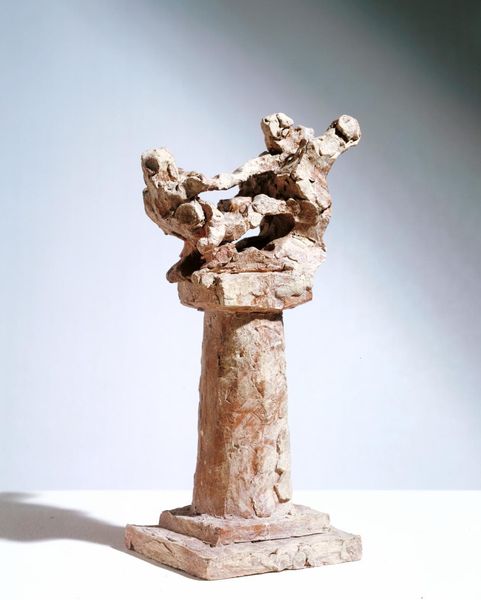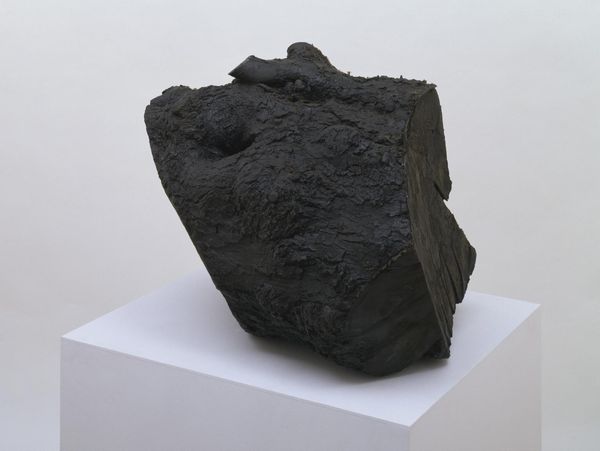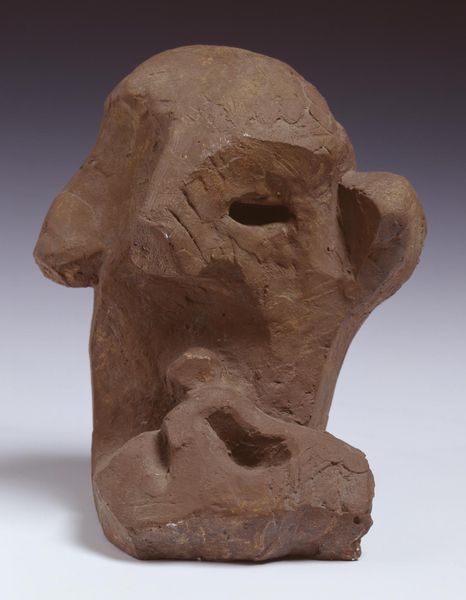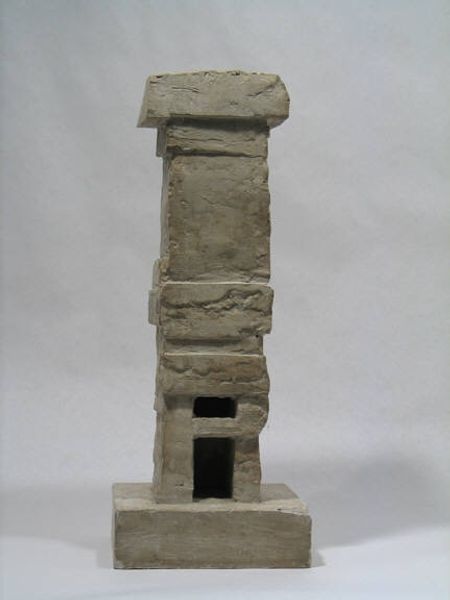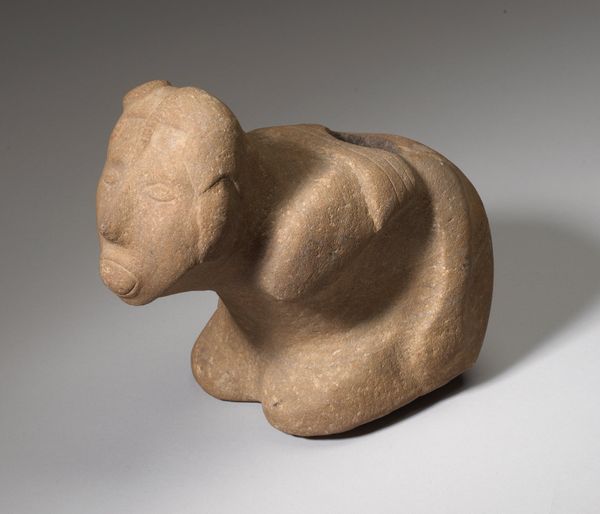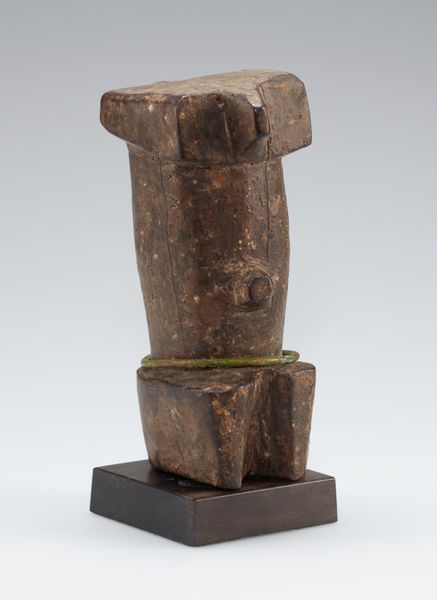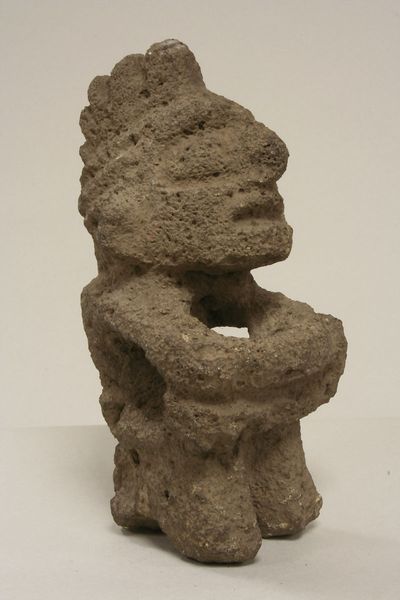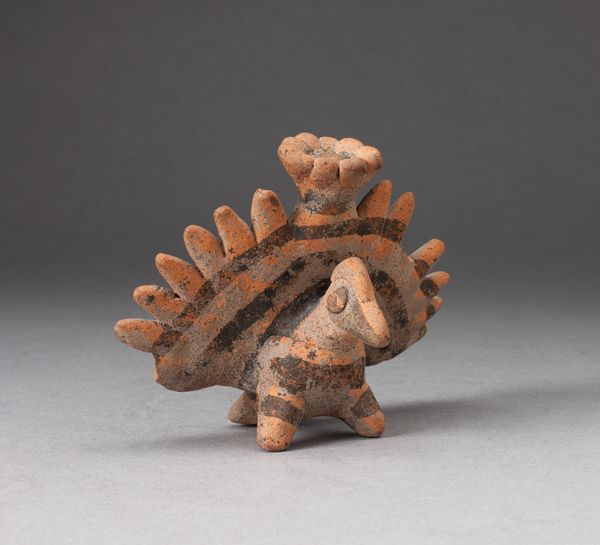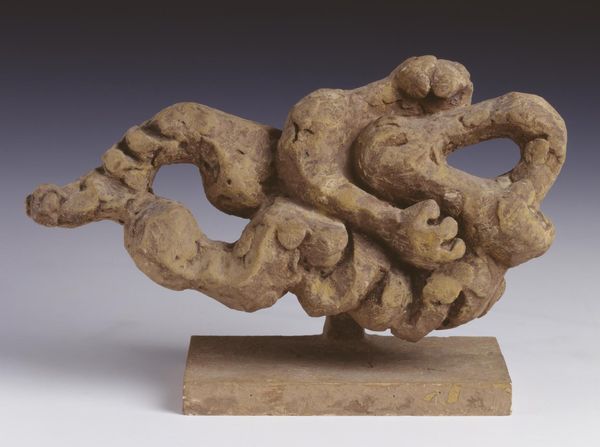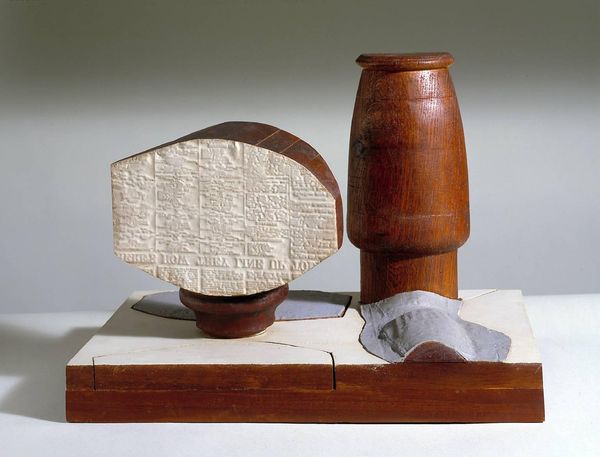
Dimensions: object: 895 x 751 x 305 mm
Copyright: © The estate of Barry Flanagan, courtesy Plubronze Ltd | CC-BY-NC-ND 4.0 DEED, Photo: Tate
Curator: Here we have Barry Flanagan’s intriguing sculpture, “a nose in repose,” a piece residing in the Tate Collections. The dimensions are roughly 89 x 75 x 30 centimeters. It's certainly a conversation starter. Editor: It certainly is! My first impression is one of playful monumentality. The rough stone atop those stacked wooden blocks creates a fascinating tension. Curator: I find the juxtaposition of materials quite striking. Flanagan, born in 1941, challenges our assumptions about sculpture by combining found natural stone with seemingly mass-produced wooden elements. It blurs the line between nature and industry, doesn’t it? Editor: Precisely! The spiral carving on the stone draws my eye—a formal element referencing classical sculpture perhaps, yet rendered in such a raw, almost primal way. The wood blocks are almost like a minimalist plinth, an unexpected base for this nose in repose. Curator: And consider the labor involved. The quarrying and shaping of the stone, the milling and assembly of the wood, all contribute to its meaning as an object of production. Editor: A fascinating exploration of form and material, wouldn't you say? Curator: Yes, indeed, a very intriguing work.
Comments
tate 6 months ago
⋮
http://www.tate.org.uk/art/artworks/flanagan-a-nose-in-repose-t03059
Join the conversation
Join millions of artists and users on Artera today and experience the ultimate creative platform.
tate 6 months ago
⋮
Flanagan learnt to carve stone while at Birmingham College of Art in the mid 1950s, but then did not return to the material until 1973. He does not like to carve deeply into his chosen block of stone and favours letting the stone reveal its own 'geography'. 'A Nose in Repose' was made in his studio at Watlington in the Chilterns, from Honiton stone from Edgehill Quarry. Flanagan first saw the stone as a pyramidal shape, but then felt it looked like 'a nose... a civil weaponry at peace'. This makes a veiled reference to the Battle of Edgehill during England's civil war. The wood supporting the stone is composed of planed and sandblasted pit-props made at Brackley, Northamptonshire. Gallery label, August 2004
